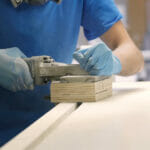The Fabrication Series: Meet Your Fabricator
2 min read
Once the Project Manager has assessed your space and worked with you on the template, it’s time for your Fabricator to bring the vision to life. If you missed our previous blog on templating and the Project Manager, you can read it here. In the next part of our Fabrication Series, we’ll take you through cutting day and the role your Fabricator plays in the creation of your space.
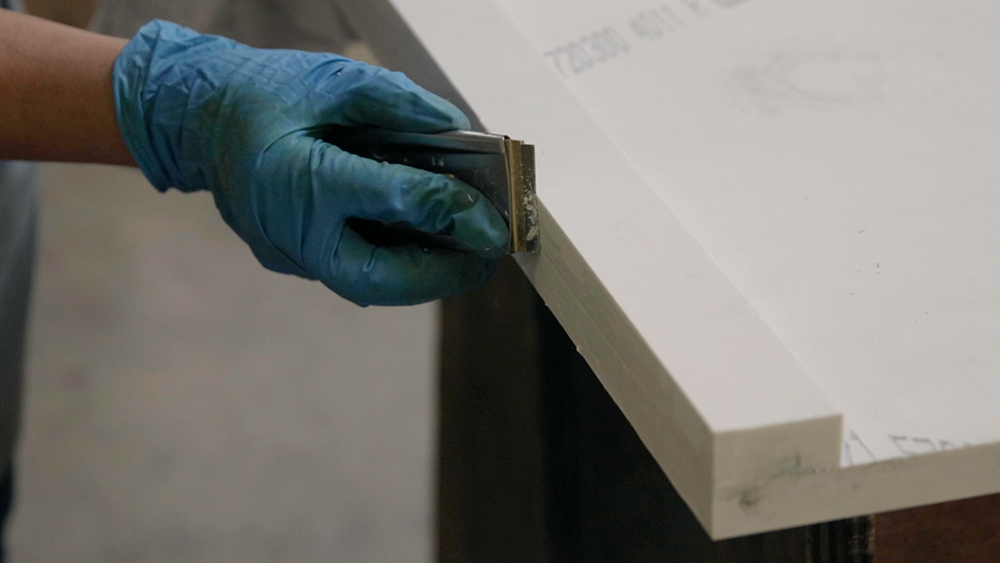
Many fabricators and homeowners prefer quartz for not only its durability but its versatility. The strong material is unlikely to crack and with a very precise cutting process, it’s easily cut into unexpected shapes, delicate tiles, and dramatic waterfall countertops. Quartz must be cut wet for safety reasons. Your Fabricator will use either a wet saw or a saw jet to cut each slab. After the pieces are cut, the edges will be finished by hand with precise attention to detail.
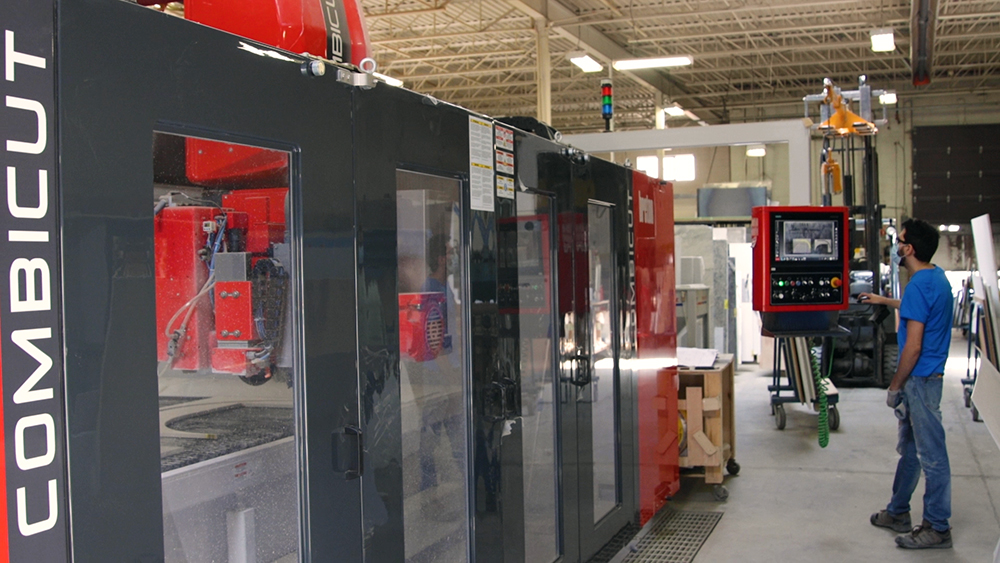
While a wet saw is an appropriate tool to use for simple, straight countertops, the advanced technology of a saw jet is preferable for a more complex design with curved lines or oblong shapes. Though they are more expensive and uncommon, saw jets can cut more quartz faster with zero breakage. Search for a local fabricator with the right tools and resources for your project.
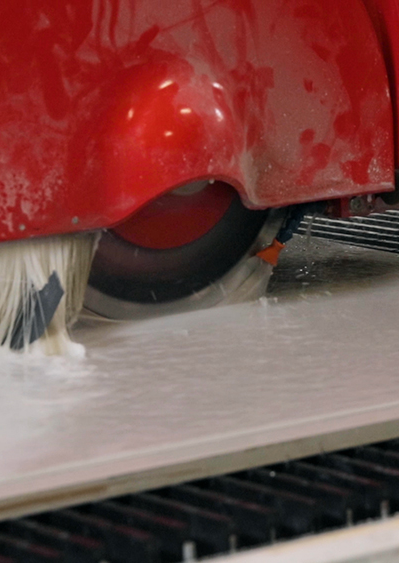
Whether cutting the quartz manually with a wet saw or automatically with a saw jet, your Fabricator will then finish the edges with a router. The edges of each piece will be meticulously routed by hand and then polished three times with progressively finer grits of sandpaper. This laborious process can take many hours and is quite physically demanding but the results are worth it.
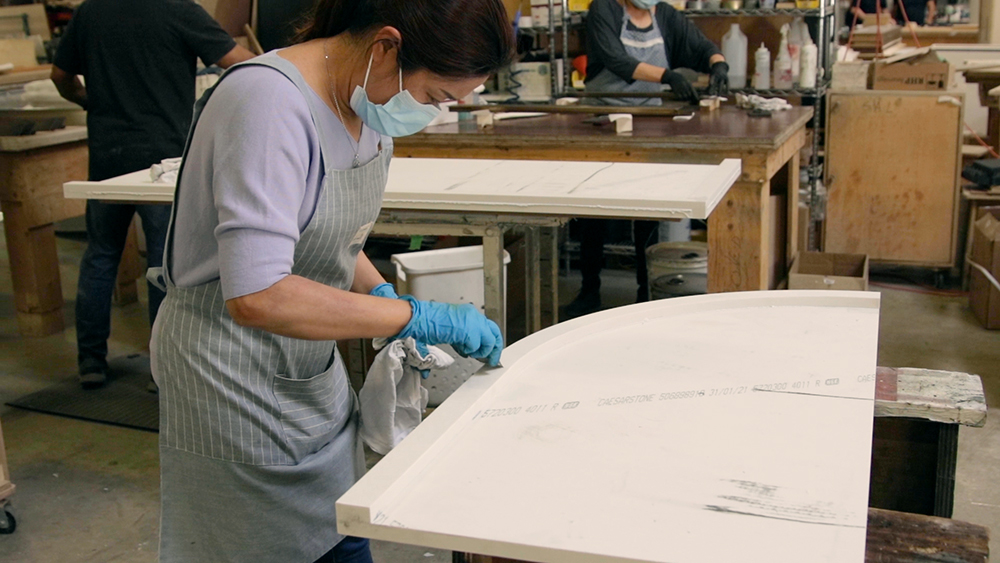
Part of the reason why it’s so important for your Project Manager to take accurate measurements is that cutting quartz can be quite hazardous. Ideally, your Fabricator will only have to cut each slab once as each cut of this engineered stone creates dust that is harmful if inhaled. If adjustments need to be made on site, cuts should be made with a wet saw outside to protect the Installer and your family from the health risks associated with this dust.
To protect workers in the stone fabrication industry, Caesarstone created the Master of Stone program. This important program provides education on hazard prevention and certification to all Caesarstone fabrication professionals. Find a Caesarstone Certified fabricator near you today. And look out for the final chapter in our Fabrication Series, Health and Safety.
{{ subtitle }}
{{ i.desc }}
{{ subtitle }}
{{ subtitle }}
